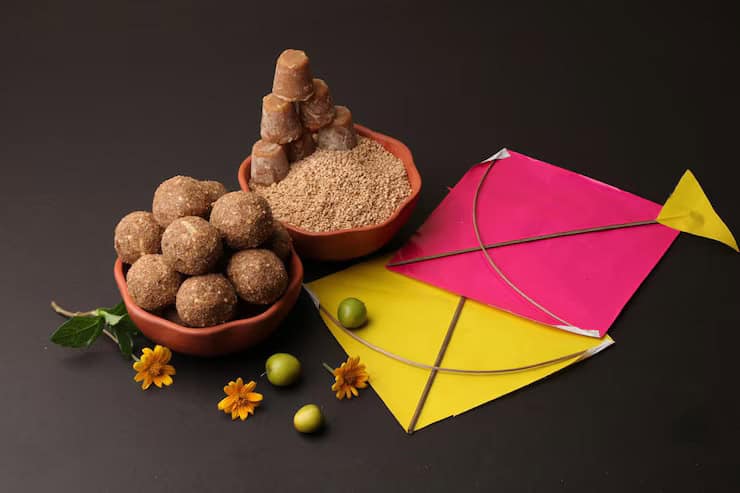Makar Sankranti is one pan-Indian festival that not only provides a celebratory start to the New Year, but also an occasion to feast on just the kind of food you need to keep yourself warm at a time when a cold wave usually sweeps across the country, especially in the north.
The popular name of the festival comes from the zodiac sign of Capricorn (Makar), marking the first day of the Sun’s transition from Sagittarius (Dhanu). What makes it doubly significant is that it marks the end of the sowing time for the Rabi crop cycle. Traditionally, it was meant for families and their cattle to unwind after the back-breaking effort that goes into sowing. Cattle, especially, get special treatment across the country – they are dolled up and fed well.
As Sadhguru, the renowned spiritual teacher, once explained to us, the word ‘sankranti’, literally translated, means ‘movement’ – a movement of the sun into a new House of Zodiac, a slowing down of work in the fields, and a signal that the winter is slowly but surely moving towards India’s brief but lyrical spring, heralded by Basant Panchami. It is also believed to mark the coming of Kalki, the tenth avatar of Vishnu.
“The significance of the Makar Sankranti festival is that it marks the day where there is a significant movement in the zodiac – the arrangement of the earth’s dial around the sun – and this movement brings about a new change in the way we experience the planet itself,” explains Sadhguru, going on to add: “… every time the zodiac sign changes, it is called a Sankranti to suggest the movement of the planet, to understand that our life is sustained and nourished by this movement. If this movement ceases, everything about us will cease.”
Celebrated on January 14 (on leap years, the date is January 15), in the Hindu month of Pousha (December 21 to January 19), Makar Sankranti (or just Sankranti) is variously known as Pongal in Tamil Nadu, where it is celebrated across four days (as in Andhra Pradesh), Bhogali Bihu in Assam, Uttarayan in Gujarat, Poush Parban in West Bengal and Songkran in Thailand.
The day, which sees people worshipping Surya, the sun god celebrated by the Gayatri Mantra, Vishnu and his divine consort, Lakshmi, also heralds the official start of the Mahakumbh Mela, which will draw millions this month like a divine mega magnet to the holy city of Prayagraj; the Gangasagar Mela in West Bengal at the point where the Ganga merges with the Bay of Bengal; the Poush Mela at Santiniketan, the university town established by Rabindranath Tagore; and the Mela Maghi at Muktsar, Punjab, which commemorates the martyrdom of the 40 ‘pearls’ (‘chalis mukte’) who gave their lives to protect Guru Gobind Singh.
People who cannot make it to either the Mahakumbh or the Gangasagar Mela take holy dips in Hinduism’s five sacred rivers – Ganga, Yamuna, Godavari, Krishna and Kaveri – wherever they flow past them. It may be bone-chillingly cold in most parts of the country, but the Spartan weather doesn’t stop the embers of devotion from burning bright in the hearts of the people.
Celebrations extend from kite-flying in Gujarat to buffalo fights in Assam, and of course, food is at the centre of the festivities. If in the Bhojpur region, ‘dahi-chiwda’ (curd and flattened rice) and ‘khichdi’ are eaten to mark the occasion (‘bajre ki khichdi’ with generous helpings of ghee in Rajasthan), people living in the north have a variety of goodies prepared with jaggery and sesame seeds (from ‘tilkut’ in Bihar and Jharkhand to ‘tilgul’ in Maharashtra) or peanuts (‘chikki’, in multiple forms, across India). For Gujaratis, it is the time for ‘undhiyo’, a sumptuous dish made with seasonal vegetables, fenugreek dumplings (‘muthiya’) and fresh spices, served with puris or rotis.
In Tamil Nadu, the festival has lent its name – Pongal – to a rice and lentils dish with either jaggery or spices; in West Bengal, it is time for ‘khejurer gur’ (date palm syrup) and ‘patishapta’, or rice flour crepes stuffed with a diced coconut-jaggery paste; and in the Telugu-speaking states of Andhra Pradesh and Telangana, the festival calls for ‘ariselu’ – deep-fried rice flour sweets with jaggery and sesame seeds (very similar to the ‘gur ki roti’ of Punjab and Haryana) – for the family and friends.
As the old pearl of wisdom goes, you need a bellyful of good food to be able to pray better. Like all festival occasions, Makar Sankranti is an occasion to add calories for a good cause.

